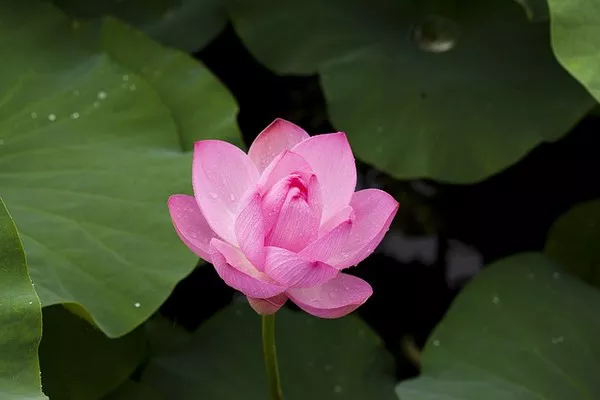In the realm of symbolism, few images carry the depth and significance that the lotus flower does. Revered across various cultures and religions, this exquisite aquatic plant has transcended geographical and temporal boundaries to become a universal emblem of purity, enlightenment, and resilience. Delving into the rich tapestry of meanings associated with the lotus reveals a profound and enduring symbol that continues to captivate hearts and minds worldwide.
Botanical Beauty
Before exploring its symbolic significance, it’s essential to appreciate the lotus flower’s botanical marvel. Belonging to the Nelumbonaceae family, the lotus is characterized by its unique growth pattern. Emerging from the mud at the bottom of ponds and rivers, it gracefully rises through the water to blossom on the surface. This process mirrors the journey of spiritual awakening and enlightenment, providing the foundation for many of the lotus flower’s symbolic representations.
Purity and Spiritual Enlightenment
One of the predominant meanings associated with the lotus flower is purity. The lotus’s ability to emerge unsullied from murky waters is seen as a metaphor for rising above life’s challenges and maintaining a sense of purity amidst adversity. In Hinduism and Buddhism, the lotus holds profound spiritual significance. Often depicted in the hands of deities or as a seat for divine figures, the lotus symbolizes purity of the body, mind, and spirit.
In Buddhism, the lotus is particularly revered as a symbol of enlightenment. The journey from the mud to the surface mirrors the path of an individual seeking enlightenment and self-realization. The lotus flower’s unfolding petals represent the gradual opening of the mind to the light of knowledge and wisdom. As one progresses along the spiritual path, the lotus becomes a powerful reminder of the potential for spiritual transformation and the attainment of higher states of consciousness.
Symbolism in Different Cultures
Beyond its association with Hinduism and Buddhism, the lotus flower carries diverse meanings in various cultures. In ancient Egyptian mythology, the lotus was a symbol of rebirth and the sun. The daily cycle of the lotus opening and closing mirrored the sun’s journey across the sky, reinforcing the connection between the flower and the celestial forces governing life and death.
In Chinese culture, the lotus is often linked to purity, beauty, and harmony. The graceful unfolding of its petals is seen as a representation of the gradual development of an individual’s soul. The lotus is also associated with good fortune and prosperity, making it a popular motif in Chinese art and literature.
Resilience and Adaptability
The lotus flower’s remarkable ability to thrive in challenging environments imparts a message of resilience and adaptability. Its roots firmly anchored in the mud, the lotus draws nourishment from its surroundings without allowing itself to be bogged down. This resilience has made the lotus a symbol of overcoming obstacles and blooming despite adversity.
The Japanese hold the lotus in high regard for its resilience and endurance. In Japanese art and poetry, the lotus is often celebrated for its ability to remain pure and beautiful even in the face of adversity. The flower’s capacity to rise above the muck and mire serves as an inspiration for individuals navigating the complexities of life.
See Also: What Flower Represents Freedom?All You Need to Know
Color Symbolism
The color of the lotus also plays a significant role in its symbolic meanings. White lotus flowers are often associated with purity and spiritual perfection. Pink lotus flowers symbolize the history of Buddha and the traditional eightfold path. Blue lotus flowers are linked to a sense of victory over wisdom and knowledge, while red lotus flowers represent compassion and love.
Conclusion
In conclusion, the lotus flower stands as an enduring symbol that transcends cultural and religious boundaries. Its rich tapestry of meanings encompasses purity, spiritual enlightenment, resilience, and adaptability. Whether rooted in the mud of ancient mythology or blooming in the waters of contemporary symbolism, the lotus continues to captivate the human imagination, offering a timeless reminder of the human capacity for growth, transformation, and the pursuit of higher states of consciousness. As we navigate the complexities of life, the lotus flower serves as an ever-present symbol of hope, inspiring us to rise above the challenges and embrace the beauty that can emerge from the depths of our own experiences.


